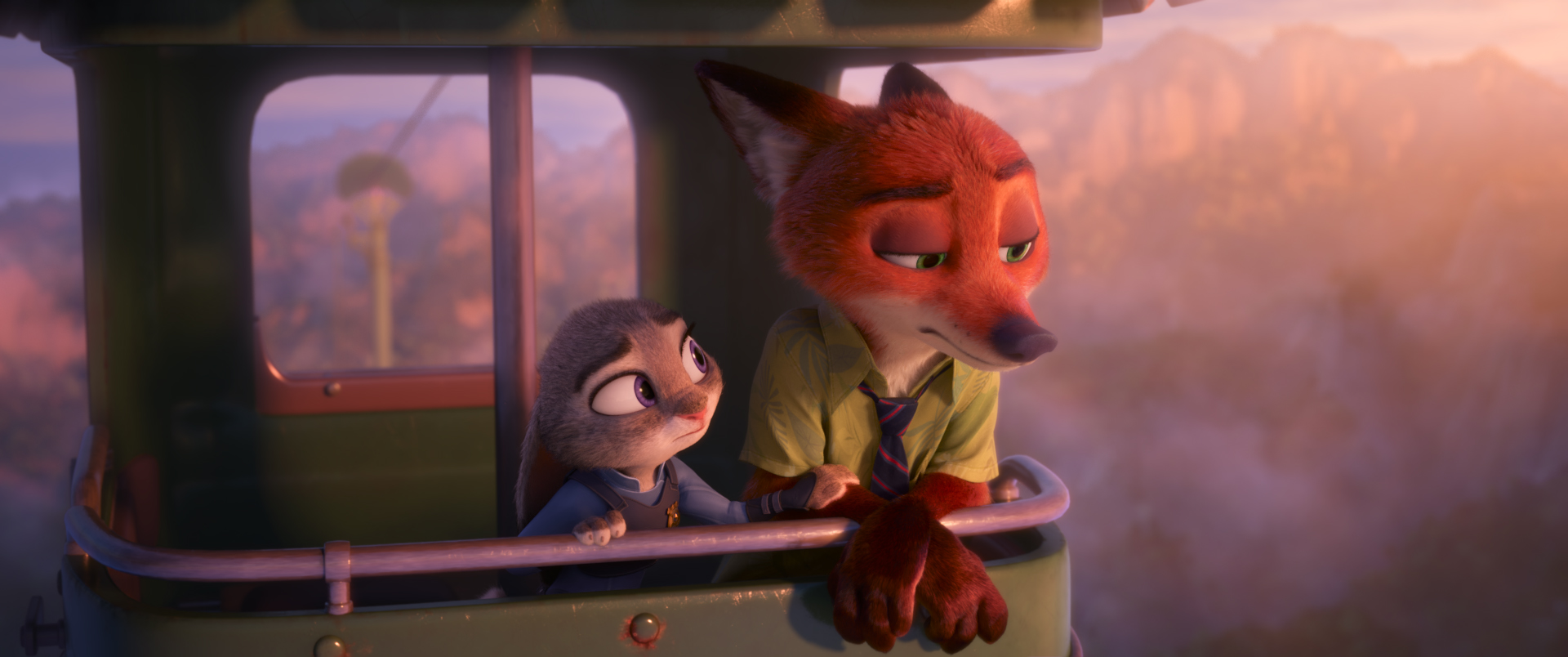Zootopia’s Story Was Originally Going to Be Much Darker … and a Lot a Less Interesting

So, fun fact! Zootopia underwent some major plot changes late in production … and it is so much better for it.
Only 17 months before completion, Zootopia had a very different premise. It featured Nick as its protagonist, a world-weary fox scraping by in a Zootopia in which predators were forced to wear “tame collars,” which shocked them every time they felt primitive (and thus dangerous) emotions like anger or excitement. You can see Nick wearing his in some of the concept art.
Nick was going to be framed for a crime he didn’t commit, and a tough-as-nails Judy was going to chase him down. Though the story did conclude with the abolishment of the tame collar mandate (there’s even a screen test of Nick’s reaction when the collar is removed) the filmmakers eventually decided that they’d created a world too unjust to save and characters too unlikable to root for. So, they rewrote the script to make Judy the main character and the discrimination in Zootopia more covert.
While the early version’s dystopian (dys-zootopian?) setting and darker story might have been as good as what we ended up with (the world shall, sadly, never know), I think it’s safe to say that the movie’s depiction of bigotry would have been much less interesting. The tricky thing about writing an allegory about prejudice in which the minority group faces codified oppression is that it tends to evoke thoughts of historical injustices rather than present ones.
It’s not that Zootopia’s anti-predator sentiment doesn’t draw parallels to current issues like Islamophobia, but there’s a knee-jerk reaction in people to connect allegories of institutionalized injustice with past wrongs, perhaps because it’s comforting to think that That Sort of Thing Doesn’t Happen Anymore.
Ultimately, a governmental mandate to collar all predators would have been perceived as an allegory for the registration of Jews and Romani under the Third Reich or the internment of Japanese Americans rather than for the casual prejudice and covertly bigoted legislation (i.e “Voter ID Laws are only intended to prevent voter fraud, we swear”) that are prevalent today.
What makes the final cut of Zootopia so brilliant is that its depiction of prejudice is distinctly modern and therefore much more uncomfortable to deal with. The city of Zootopia is integrated and progressive enough that, on a superficial level, it appears that its citizens aren’t prejudiced at all.
Clearly, predators aren’t regarded with suspicion, because the mayor is a lion. Small animals aren’t belittled or abused, because a sheep made it to assistant mayor. Rabbits aren’t dismissed as weak and dumb, because the ZPD just took on their first rabbit lieutenant, and foxes aren’t excluded, because there’s no legislation prohibiting a fox pup from joining the Junior Ranger Scouts.
Needless to say, if you’ve seen the movie, you know things are a lot more complicated.
We can’t know how deftly the earlier drafts of Zootopia tackled its subject matter (I really do feel bad about criticizing a script I haven’t even read), but I can’t imagine that Judy’s openly anti-fox sentiment would have had the same cringe-factor as her condescension in calling Nick “a real articulate fella” or that her revelation that it’s wrong to forcibly collar 10% of the population would have been as heartbreaking and ugly as the moment Judy instinctively reaches for fox repellant and she and Nick realize that—despite everything they’ve accomplished together—she’s afraid of him.
I don’t want to be unfair. Had the earlier draft made it to the final cut, Zootopia might have still been a great film that addressed the origins and consequences of bigotry with intelligence, empathy and humor. Again, we’ll never know.
However, the changes made two-thirds of the way through production fundamentally altered the film’s approach to prejudice. It made it more relevant and therefore more complicated. It was a risk, and that risk paid off. To Byron Howard, Rich Moore, and everyone else who worked on this film, thank you for that.
Petra Halbur is a writer traversing the perilous terrain of post-graduate life whilst trapped in the world-building phase of developing her science-fantasy graphic novel. You can read more from her at Ponderings of a Cinephile or follow her onTwitter.
—Please make note of The Mary Sue’s general comment policy.—
Do you follow The Mary Sue on Twitter, Facebook, Tumblr, Pinterest, & Google +?
Have a tip we should know? tips@themarysue.com